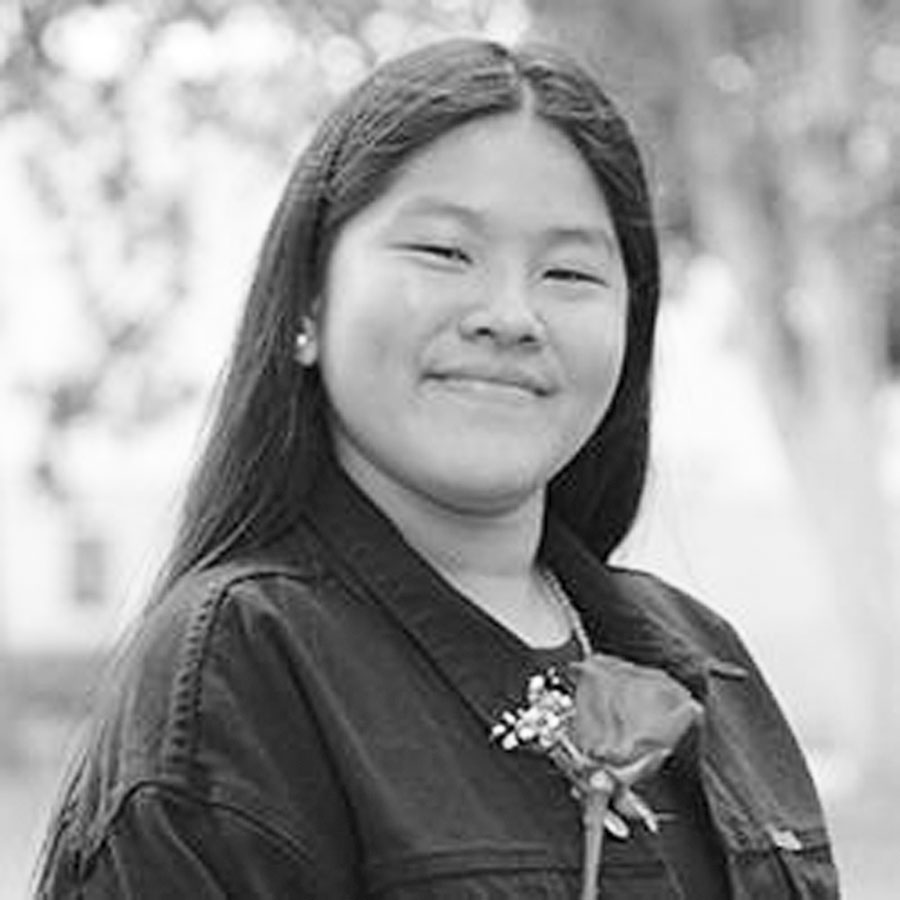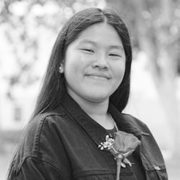
by Tammy Rassamekiarttisak
[Editor’s note: Once a year, an essay competition is held at California State University, Northridge, amongst Asian American Studies and Education majors, as part of an endowment set up by Prosy Abarquez-Delacruz for her deceased mother, Asuncion Castro Abarquez and her deceased sister, Rosalinda Abarquez Alcantara, to provide a scholarship grant to deserving students. The essays are vetted by a committee headed by Dr. Tomo Hattori, Dr. Philip Hutchinson and Dr. Kimberly Teaman Carroll with oversight from Dept. Chair Eunai Shrake this 2020. This year’s winning essay is from Tammy Rassamekiarttisak, a recent graduate of CSUN, with a bachelor of science in Public Health and a bachelor of arts in Asian American Studies.]
Since double majoring in Public Health and Asian American Studies, I have seen the lack of resources specifically addressing Asian American and Pacific Islander (AAPI) students’ needs, which stems from the Model Minority Myth (MMM).
The MMM stemmed during the Civil Rights Era, where the government used this myth to show that Asian Americans are “doing well” despite the adversities they have faced. However, with the MMM used as a wedge against other communities of color and for Asian American communities to be lumped into “one” uniform, interchangeable person, is problematic. It’s problematic because when an Asian American fails to “meet the standard,” they are individually blamed for it, rather than looking at the laws, policies, and/or institutional racism that might be the root of the cause instead.
Through my Asian American Studies 311: Research Methods course, my group and I are in the process of conducting a mixed-methods study on academic expectations and racial experiences for AAPI students at California State University, Northridge (CSUN). We seek to explore how discrimination and racism affect AAPI students’ academic experiences, how they navigate them, and how the COVID-19 pandemic has played a role in their experiences. This research is significant because of the pandemic and how the AAPI community is currently affected by racism and acts of violence. In order to turn this research from deficit/damage-centered research to desire-based research, we used Ethnic Studies as Praxis by utilizing the Critical Race Theory (CRT).
In “White Logic, White Methods: Racism and Methodology,” Tufuku Zuberi and Eduardo Bonilla-Silva (2008) argues that scientific research on communities of color has been plagued by a White ideological methodology that binds communities of color to inequality in society. The authors contextualize White ideological methodology through the terms White logic and White methods. To understand what these terms mean, they present problems to researchers and pose their research on communities of color. First, the authors state that Whites in society are the dominant group materially and ideologically, they have an incentive to maintain their position of power by legitimizing and accepting racial differences. Since social science research is dominated by White, cisgender males who regularly do not acknowledge work by scholars of color, it makes sense that the logic of analysis and methods used to examine communities of color reflect the lens of their White, heteronormative, cisgender male hegemony. Thus, Zuberi and Bonilla-Silva define white logic as the context in which White supremacy has defined the techniques and process of reasoning about social facts (2008). White logic assumes that White views are neutral and objective, rendering communities of color perspective as subjective. This act is harmful to communities of color because it allows Whites to be the center of building “legitimate” knowledge of history and culture, and grants them the authority to label communities of color as the “Other” without such contexts. Consequently, this justifies White superiority and urges them to educate or to “civilize” communities of color. Aiding White logic is White methods, which are practices and tools used to manufacture empirical data and analysis to support the racial stratification and racial knowledge in society (Zuberi and Bonilla-Silva, 2008).
Employed together, White logic and White methods standardize the knowledge and experiences of white people to produce racial knowledge that dehumanizes communities of color by constricting communities of color as uncivil, prone for exclusion, and primitive under White domination. Mori Nishida offers institutional change as a solution to stop the continuation of White ideological methodology (2001).
This means that knowledge-making through research must undergo a shift in theoretical perspective to place communities of color as active participants. Ethnic studies provide a voice to communities of color by conducting community-based research through the lens of CRT.
Asian migration to the United States has been drenched with stories of horrific nightmares revolving around unimaginable pain and gamble to anticipative, hopeful new beginnings promising a better economic and social stability that was otherwise unattainable in their home countries. Regardless of their reasons for migrating, Asian migrants have become the largest group of immigrants in the United States, and have steadily and successfully assimilated to American culture and lifestyles all the while maintaining their own culture and proudful origins. Existing research and literature on migration from Southeast Asia discusses the frightful journeys to the United States, accompanied by struggle, sacrifice, and the social and historical contexts that surround each.
The article, “Introduction: Refugee in the Hyperghetto” by Eric Tang, follows the life of Ra Pronh after Cambodia. Although her immigration process began in Cambodia, it wasn’t just a straight destination to the United States. There were many stops along the way and even after the immigration process, there were still ways that the immigration process affected Ra Pronh and her family. Despite the many stops and finally getting to the United States, the family living situation becomes unstable and there are many movements in her living environment. Hyperghettos could be compared to the times that Ra Pronh was in Cambodia during wartime, wherein she had to develop survival skills. When considering the immigration process, it doesn’t end with just the journey of traveling, but it also includes the process and the immigrants’ lives after migrating.
When thinking about refugees in the hyper ghetto, they are living in places that bring trauma that potentially haunt them. Looking at the article, “White Entitlement and Other People’s Crimes” by Lisa Marie Cacho, the author discusses White entitlement and how that affects people’s lives. According to the perpetrators, they believed that they were doing a service to the state by impersonating and acting how they believed the states would have handled the situation. Despite the victims being citizens who have lived in America for most of their lives, they were racially profiled as the other.
There is an argument of, “We conventionally separate identity into realms of status and conduct, and have presumed that status (for example, one’s race) as opposed to conduct (in the form of how one behaves) has constituted the primary barrier to citizenship. But what we remember as status-based exclusions in fact were premised on assumptions about appropriate conduct. Thus, history shows the impossibility of separating the realm of status from that of conduct” (Cacho, 2012). Citizenship and a sense of belonging are often linked to race and the stereotypes of who is considered a part of the state. Looking closely at the relationship between laws, policies, and race, one can see the connection to citizenship and who is allowed into the state.
The author, Jose Antonio Vargas discussed his feelings of living his life as an undocumented immigrant in the article, “My Life as an Undocumented Immigrant.” Although his mother had sent him as a child to immigrate to the States, Vargas’papers were forged and fake, unbeknownst to him. When examining his hesitancy to tell people for fear of being judged, ridiculed, and persecuted, Vargas was forced to hide his status and lived in constant fear. Vargas was unable to get the help nor the resources like financial aid, a job, given the laws and regulations. Although the migration process ended, his life was still affected and he continues to deal with the trauma that follows him due to his undocumented status. Vargas had trouble trusting people and felt unable to communicate with others about his status. Like most immigrants living in the United States, Vargas didn’t feel comfortable telling people and oftentimes, the negative stereotypes persisted, despite who they were. Laws and policies, like Prop 187, were discussed and came up from these racially, negative stereotypes, and misperceptions of other people. They had real impacts on immigrants’ lives, as it made them relive the trauma and constant fear of not having their immigration status legalized.
Especially during the COVID-19 pandemic, AAPI communities are faced with racism and acts of violence. History repeats itself during these times of crises, pitting blame onto one another, similar to times like the Yellow Peril and discriminatory immigration laws and regulations.
Despite claiming to be “colorblind,” U.S. society needs to reflect on how institutional racism has come back to remind us of the changes we need. These essential workers fighting for us, not just the healthcare workers, but also sanitation workers, fast food employees, and many others were deemed “non-essential” before by this society. Perhaps, now people may see beyond the black and white narratives that society has painted for so long?






